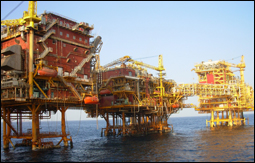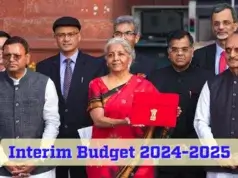
is a project finance, commercial and project management professional
The Narendra Modi government recently increased the price of natural gas from $4.2 to $5.6 per mmbtu as part of the new gas pricing policy. Nirav Dadhania, a project finance, commercial and project management professional, explains how the gas price hike was arrived at and analyses its impact on both oil and gas companies as well as the exploration and development of oil and gas fields.
The law of demand and supply has remained a fundamental principle governing economies and companies since time immemorial. The only exception to this law, it seems, is Indian infrastructure sector, where the supply/pricing is governed by political agenda and is the function of populist measures.
Recently, the Modi government increased the price of natural gas from $4.2 to $5.6 per mmbtu. Now there can be parties to both sides of the coin with their arguments as to why the price hike is more or less. Though the positive aspect of the policy is that, at least now there is some clarity then not having any clarity at all. Also, the price will be revised every six months.
Moreover, the Cabinet Committee on Economic Affairs has mentioned that for all discoveries after this decision, in ultra deep water areas, deep water areas and high pressure-high temperature areas, a premium would be given on the gas price to be determined as per the prescribed procedure. It is yet to be seen how effective this procedure would be.
The Congress-led UPA regime had, in June last year, approved a price formula of $8.4 per mmbtu as suggested by the Rangarajan Committee. This was to be implemented with effect from April 1, 2014. But the Election Commission halted the implementation so that the new government could take a final decision.
Pricing mechanism
The gas price formula was to be derived on the principle of gas-on-gas competition. But as India is some distance away, the gas-on-gas price of other regions was taken where such competition exists. In the new formula the weighted average of price in USA, Canada, Russia and Europe is taken for price indexation. The formula is as mentioned below:
VHH PHH + VAC PAC + VNBP PNBP + VR PR
P = ________________________________________
VHH + VAC + NVBP + VR
Where,
(a) VHH = Total annual volume of natural gas consumed in USA and Mexico.
(b) VAC = Total annual volume of natural gas consumed in Canada.
(c) VNBP = Total annual volume of natural gas consumed in EU and FSU, excluding Russia.
(d) VR = Total annual volume of natural gas consumed in Russia.
(e) PHH and PNBP are the annual average of daily prices at Henry Hub (HH) and National Balancing Point (NBP) less the transportation and treatment charges.
(f) PAC and PR are the annual average of monthly prices at Alberta Hub and Russia respectively less the transportation and treatment charges.
Notes
i. The periodicity of price determination/notification shall be half yearly. The price and volume data used for calculation of applicable price shall be the trailing four quarter data with one quarter lag. The first price would be determined on the basis of price prevailing between July 1, 2013, and June 30, 2014. This price would come into effect from November 1, 2014, and would be valid till March 31, 2015. Thereafter, it would be revised for the period April 1, 2015, to September 30, 2015, on the basis of prices prevalent between January 1, 2014, and December 31, 2014, i.e. with the lag of a quarter and so on.
ii. The price so notified would be applied prospectively with effect from November 1, 2014, and would be on GCV basis as input prices in the formula are on GCV basis.
iii. The following are the exceptions to which this policy would not apply:
(a) The matter relating to cost recovery on account of shortfall in envisaged

production from D1 & D3 discoveries of Block KG-DWN-98-3 is under arbitration. Hence, the operator would be paid the earlier price of $4.2/mmbtu till the shortfall quantity of gas is made good. It is proposed that the difference between the revised price and the present price ($4.2 per million BTU) would be credited to the gas pool account maintained by GAIL (India) Ltd and whether the amount so collected is payable or not, to the contractors of this block, would be dependent on the outcome of the award of pending arbitration and any attendant legal proceedings.
(b) For all discoveries after this decision, in ultra deep water areas, deep water areas and high pressure-high temperature areas, a premium would be given on the gas price to be determined as per the prescribed procedure.
Review and analysis
The Association of Oil & Gas Operators (AOGO), whose members include global and domestic energy majors such as BG, BP, Cairn India, Reliance Industries and ONGC, expressed disappointment at the decision. But ONGC Chairman D.K. Sarraf welcomed the decision and said in an interview that “The government’s decision to have a non-controversial gas pricing mechanism will encourage both the company and the industry to undertake exploration and development works.”
The flipside being that the price index is taken of countries (USA, Canada and Russia) which are rich in oil and gas resources. They have geologies where the cost of exploration and development of oil and gas fields is low. Whereas, in India, the exploration of oil and gas is in difficult geologies or areas where the cost can be quite prohibitive. Logically, it doesn’t make sense to compare cost of production from a commodity rich country to a commodity poor country. The exploration projects are unique and risk return profiles differ from one project to another.
It is difficult to understand why an altogether more feasible approach like cost plus or revenue sharing be not explored. Cost plus (like under administered price mechanism) if monitored fairly, can reduce conflicting factors. Considering the current pricing regime, it could actually make a compelling case for exploration companies to invest abroad and then import in India.
The government on its part had to do a fine balancing act between interests of exploration companies and those of consumers, mainly power and fertiliser industries. This, too, in a country where government or PSUs have remained the prime infrastructure provider till now. The infrastructure projects are still looked upon with social agenda rather than profit making venture. Currently, infrastructure companies are struggling to survive whereas loss-making companies in new-age sectors with less or no government interventions are getting astronomical valuations.
All these elements make the government promised ‘free market’ to NELP investors a distant dream.
(Nirav Dadhania can be contacted at ![]() )
)











